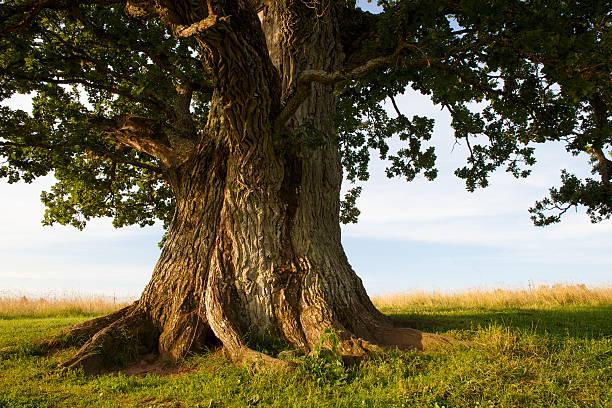### The Role of Old Trees in Ecosystems
Old trees, often referred to as ancient or veteran trees, play a pivotal role in ecosystems. Their importance extends beyond mere age; they are integral to ecological stability, biodiversity, cultural heritage, and climate regulation. This essay delves into the multifaceted roles that old trees serve within ecosystems, underscoring their critical importance.
#### Ecological Stability and Structural Integrity
Old trees act as keystones in their ecosystems, providing structural stability and influencing the physical environment. Their extensive root systems stabilize soil, reducing erosion and maintaining soil health. The canopy of an ancient tree can moderate local climate conditions by providing shade, reducing wind speed, and maintaining moisture levels. This microclimate supports various plant and animal species that rely on these conditions to thrive.
#### Biodiversity Hotspots
Veteran trees are biodiversity hotspots, hosting a multitude of life forms. Their bark, cavities, and decaying wood offer habitats for numerous organisms, including fungi, lichens, mosses, insects, birds, and mammals. For example, woodpeckers and owls often nest in the cavities of old trees, while various insects and fungi decompose the deadwood, contributing to nutrient cycling. These interactions create a complex web of life, enriching the ecosystem's overall biodiversity.
#### Historical and Genetic Archives
The growth rings of old trees serve as historical records, capturing data about past climatic conditions, such as rainfall patterns, temperature fluctuations, and significant environmental events. Dendrochronology, the study of tree rings, allows scientists to reconstruct historical climate conditions and understand long-term ecological changes. Additionally, the genetic material of ancient trees holds invaluable information. These trees have survived through various environmental changes, carrying genes that confer resilience and adaptability. Preserving their genetic diversity is crucial for the future of forests, especially in the face of climate change.
#### Cultural and Spiritual Significance
Ancient trees often hold cultural and spiritual significance for local communities. They are living symbols of longevity, continuity, and wisdom. Many cultures revere old trees, incorporating them into folklore, religious practices, and communal traditions. Protecting these trees thus preserves not only the ecological heritage but also the cultural identity of communities.
#### Climate Regulation
Old trees play a significant role in climate regulation. Through the process of photosynthesis, they absorb carbon dioxide and release oxygen, acting as carbon sinks. The carbon stored in the biomass of ancient trees can amount to significant quantities, mitigating the effects of climate change. Moreover, their large canopies and root systems contribute to water regulation, influencing hydrological cycles and reducing the impact of extreme weather events.
#### Challenges and Conservation
Despite their importance, old trees face numerous threats. Urbanization, deforestation, climate change, and diseases pose significant risks. Conservation efforts are essential to protect these irreplaceable giants. Strategies include legal protection, habitat restoration, and the establishment of protected areas. Additionally, raising public awareness about the value of ancient trees can foster community-led conservation initiatives.
#### Conclusion
The role of old trees in ecosystems is profound and multifaceted. They are cornerstones of ecological stability, biodiversity, historical knowledge, cultural heritage, and climate regulation. Protecting and preserving these ancient trees is not only a matter of ecological necessity but also of cultural and environmental stewardship. As we face the challenges of a changing world, the wisdom of these ancient giants can guide us towards more sustainable and harmonious coexistence with nature.

